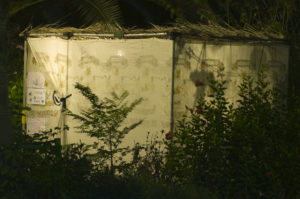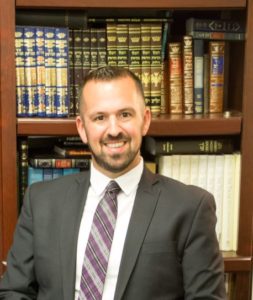
Schrödinger’s cat is a thought experiment used in quantum mechanics that — without getting into the hairy details — consists of a cat in a box becoming radioactively poisoned and, upon one opening the box, the cat is found to be, paradoxically, both dead and alive.
The Jewish holiday of Shemini Atzeret, sandwiched between Sukkot and Simchat Torah, has nothing to do with radioactive cats or quantum mechanics, but it’s an anomaly in its own right:
“It’s a hybrid holiday,” said Rabbi Eliezer Hirsch of Mekor Habracha/Center City Synagogue in Philadelphia.
Shemini Atzeret is both its own holiday and an extension of the holiday of Sukkot and the preface to Simchat Torah.
“In the Torah, we’re told to have a sacred congregation, a gathering, on the eighth day of Sukkot,” Congregation Beth Tikvah Rabbi Nathan Weiner said.
In Hebrew, “shemini” means eight, and “atzeret” means assembly. The holiday is first mentioned in Leviticus 23:36 and, according to a midrash, is a way to linger in God’s presence following the intensity of the weeks of the High Holidays.
“We have spent so much time with God and in synagogues over the last couple of weeks,” said Rabbi Yonah Gross of Congregation Beth Hamedrosh in Wynnewood. “Before we head back to our lives, Hashem says, ‘I want to spend one more day with you.’”
Celebrated on the 22nd of Tishrei in Israel or the 22nd and 23rd of Tishrei elsewhere, Shemini Atzeret, in short, is a celebration that acts as the transition from Sukkot to Simchat Torah.
Like most concepts in Judaism, however, the simple explanation is not necessarily the most satisfying one, and it certainly doesn’t account for why Shemini Atzeret remains a lesser-known Jewish holiday.
The holiday is a Yom Tov, a festival day, where one refrains from using technology like on Shabbat. During Shemini Atzeret one can — but doesn’t have to — dine in the sukkah; however, it’s not necessary to say a blessing, shake the lulav and etrog, eat a specific food or complete certain ritual practices.

“There’s not a very clear, tangible meaning that people can grab onto,” Weiner said.
Shemini Atzeret is observed differently based on one’s geography and Judaic movement, making the holiday’s ritual practices even harder to pin down.
In Israel, as well as in the Reform and Reconstructionist movements, Shemini Atzeret is a one-day celebration that also combines Simchat Torah.
In the Orthodox and Conservative movements outside of Israel, Shemini Atzeret is a two-day affair.
Yet Weiner tacks an asterisk onto this idea.
“It’s where you live, not where you are” that determines if your celebration is one or two days. If you’re in Israel but are a Conservative Jew from the U.S., you’d celebrate the holiday for two days, despite being in an area that celebrates for just one.
To make matters more complicated, Simchat Torah is not a biblical holiday like Shemini Atzeret and Sukkot are, meaning it was developed by rabbis and is not in the Torah. The two-day celebration of the holiday was likewise created rabbinically, largely for practical reasons.
Outside of Israel, several holidays, such as Passover, consist of two-day celebrations, instead of one in Israel, to create a larger margin of error for the lunar calendar.
“The calendar needed to be declared by the high court in Jerusalem and allow time for the word to get out when exactly the holiday was,” Gross said.
To make sure those outside of Israel caught word of when exactly a holiday was and had time to celebrate, the holiday in question was extended to two days, not one, a much more laborious solution to a problem that could have been solved today through a simple Google search.
But regardless of how or where one is celebrating Shemini Atzeret, there are a few rituals that are the same across the board.
During Shemini Atzeret, we add the prayer for geshem, rain, to the Shemona Esrei or Amidah, the daily prayer central to Jewish practice. This is not only added on Shemini Atzeret to mark the changing of the seasons but is said at the end of Sukkot to make sure that rain doesn’t fall while we’re dwelling in a sukkah and eating outside.
And like most every Jewish holiday, Shemini Atzeret blends joy and grief, as it is another opportunity for Yizkor, the memorial service, following Yom Kippur, Hirsch said.
If Jews can figure out how to find harmony in the seeming contradiction of celebration and mourning, then we are certainly capable of deciphering the meaning of a holiday that both stands on its own and is intertwined with others. Besides, it’s got to be easier to understand than quantum mechanics.
[email protected]; 215-832-0741






